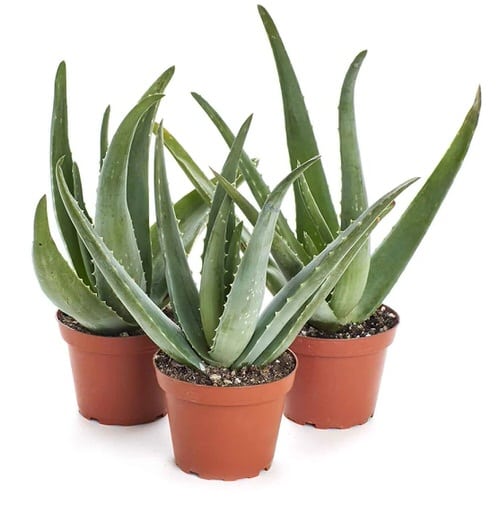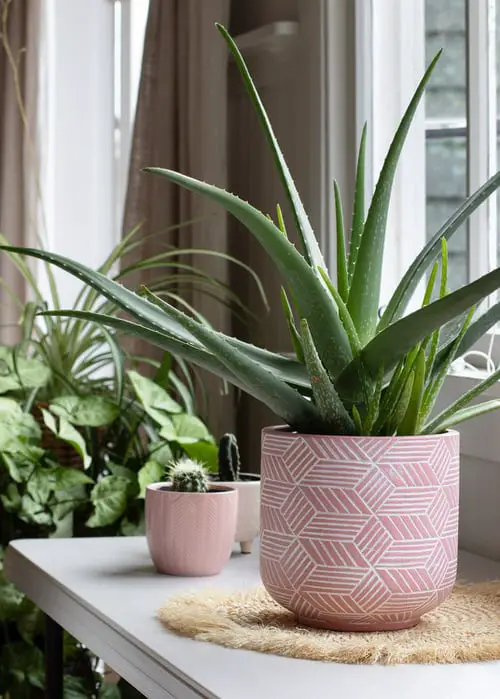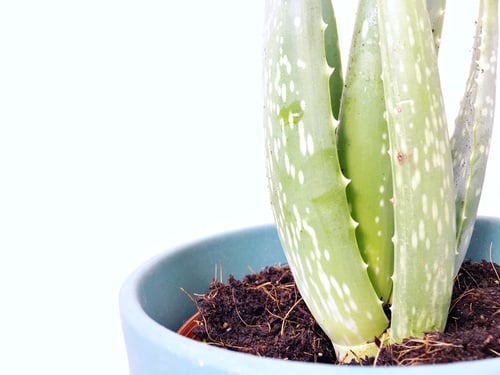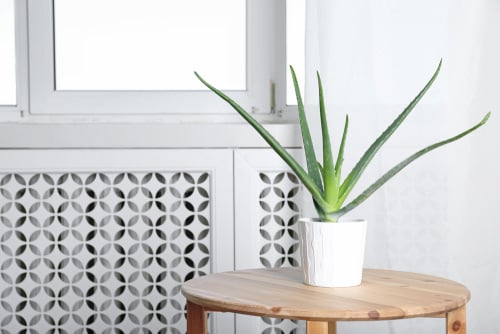Worried about your Aloe Vera Leaves Not Plump? Follow our important tips and tricks on How to Get Thick Aloe Vera Leaves!

Aloe Vera can be a great addition to your plant collection. It is quite easy to grow, and its gel has tremendous benefits. If you are already growing it and want to know How to Get Thick Aloe Vera Leaves, we have all the right tips for you!
Here are the best types of Aloes you can grow
How to Get Thick Aloe Vera Leaves?
1. Keep it Thirsty (The Most Important #Tip)
People have a misconception that the more water they will provide, the more the plant will take and store in the leaves, making it look plumpy. Contrary to this popular belief, the opposite is true, and overwatering might rot your plant and eventually kill it.
With Aloes, the thing is the less you’ll water frequently, the more this plant will direct its leaves to store water, and they will become fleshy and full. And if you’ll water regularly, the foliage will be thin and small.
The best thing is to water it thoroughly whenever you discover a dry growing medium.
2. Provide More Sunlight

Aloe, being succulent, does best in a good amount of sunlight. If you keep your plant in a shady spot or a location where it gets an hour or so of indirect light, then it will have skinny leaves.
Make sure that the plant gets a minimum of 3-4 hours of direct sun every day.
3. Avoid a Really Small Pot
Growing aloe in a tiny pot will make the leaves small and skinny. It will also urge the plant to grow more pups rather than diverting its energy into growing plenty plumpy leaves. Make sure to use a pot that is one size bigger than the plant.
4. Not Using the Right Growing Medium
Non-plump, skinny, and brittle leaves might be an indication that the plant is not getting enough water. Using compact soil is the main reason that prevents the roots from absorbing moisture.
This is why aways use a well-draining soil mix when growing aloes and other succulents for healthy specimens.
5. Monitor Diseases & Pests

Aloe can sometimes get infested with Aloe Mite, which can hamper the plant’s growth, resulting in skinny and pale leaves. You can take care of the pests using insecticidal soap.
Also, keep an eye on the root, stem, and leaf rot. The best way to keep all these issues at bay is never to overwater the plant.
6. Re-pot When it Starts to Grow Pups
Avoid re-potting the plant at any random time of the year. The best time to repot is when you witness it growing pups; at that time, you can shift the pups to a new location. This will allow the mother plant to become full and plump again.
7. Right Temperature

This plant performs best when kept in temperatures between 55-90°F or 13-32°C. Avoid exposing the plant to cold temperatures. If you live in a cold zone, bringing the plant indoors before the frost would be wise.
8. Avoid Over Feeding
Go easy with the fertilization. Succulents and cacti grow best in poor soil, and so do the plants from the aloe genus. Just fertilize them 3-4 times a year, and they’ll do well.



I have a huge aloe plant I don’t know what to.do with it. I’ve had it for years and don’t want to just throw it out. Suggestions
Mail it to me i’ll take it.
I thought the same thing 😆
I’ll take it!! Lol
I’ll take it would love to have it apart of my family
You could send the aloe to me. :) I love aloe plants. I have several and I have several baby plants I’ve got a great start from the mother plant.
You could message me with how you got it so big and healthy. For some reason I’ve always been lousy at keeping this one plant. I have other succulents that thrive, just not these unfortunately, I want huge fat aloes. Don’t know what I’m doing wrong.
Take it to a nursing home and donate it to patient or nurse!
I am a nurse if you still have the plant, send it to me please❤️
I used to live on a tropical island and we had giant aloeveras in the backyard. I used to use the gel in my smoothies. You can also make hair masks. Just Google the benefits of aloe gel and find ways to incorporate it into your life!
I hope you are well. I read your article about aloe vera. This is very informative and helpful for using aloe vera. I appreciate your article. I have also written an article about aloe vera. Please check my article and give me feedback.
Best Way to Grow and Care For Aloe Vera
My Website About Plants Information: Swatt Views